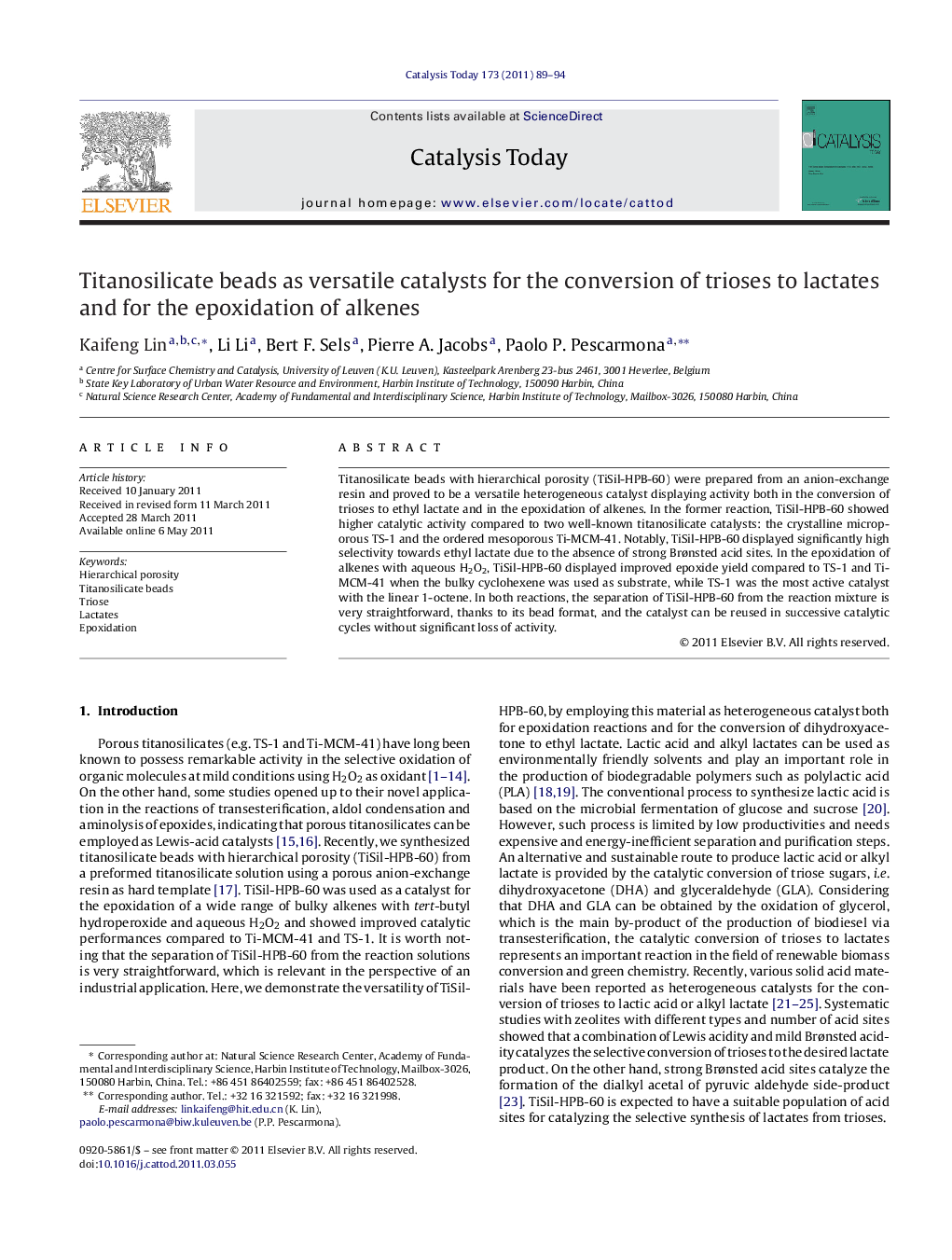| Article ID | Journal | Published Year | Pages | File Type |
|---|---|---|---|---|
| 55974 | Catalysis Today | 2011 | 6 Pages |
Titanosilicate beads with hierarchical porosity (TiSil-HPB-60) were prepared from an anion-exchange resin and proved to be a versatile heterogeneous catalyst displaying activity both in the conversion of trioses to ethyl lactate and in the epoxidation of alkenes. In the former reaction, TiSil-HPB-60 showed higher catalytic activity compared to two well-known titanosilicate catalysts: the crystalline microporous TS-1 and the ordered mesoporous Ti-MCM-41. Notably, TiSil-HPB-60 displayed significantly high selectivity towards ethyl lactate due to the absence of strong Brønsted acid sites. In the epoxidation of alkenes with aqueous H2O2, TiSil-HPB-60 displayed improved epoxide yield compared to TS-1 and Ti-MCM-41 when the bulky cyclohexene was used as substrate, while TS-1 was the most active catalyst with the linear 1-octene. In both reactions, the separation of TiSil-HPB-60 from the reaction mixture is very straightforward, thanks to its bead format, and the catalyst can be reused in successive catalytic cycles without significant loss of activity.
Graphical abstractTitanosilicate beads with hierarchical porosity prove to be a versatile heterogeneous catalyst for the epoxidation of alkenes with hydrogen peroxide and for the synthesis of ethyl lactate from the triose sugar dihydroxyacetone (DHA). Notably, the separation of the catalyst from the reaction mixture is very straightforward, thanks to its bead format, and the catalyst can be reused in successive cycles without significant loss of activity.Figure optionsDownload full-size imageDownload high-quality image (198 K)Download as PowerPoint slideHighlights► Titanosilicate beads with hierarchical porosity as versatile heterogeneous catalyst. ► Active in the conversion of trioses to lactates. ► Active in the epoxidation of alkenes with hydrogen peroxide. ► Straightforward separation and recycling of the catalyst thanks to its bead format.
